Lamborghini Miura: The Making Of A Legend — Part 1
Images: Archivio centrale dello Stato/Stile Bertone, Ida-Mari Svevad, Christian Descombes, Piero Stroppa, Archivio Farabola, Gautam Sen
In honor of the late, great Marcello Gandini, we present this two-part article showcasing one of his most remarkable designs.
At the opening of the 47th Salone dell’Automobile, the Turin Motor Show, on 3rd November 1965, one of the most exciting stands was that of Automobili Ferruccio Lamborghini. On display was a car that motor show visitors were getting used to seeing—the Lamborghini 350 GT coupe—as well as a logical derivative of that model, a very pretty convertible version, which was badged the 350 GTS (as in Gran Turismo Spider, Italian for convertible). But it was the third exhibit, in-between these two cars, that had everyone talking—it was an incomplete ‘naked’ car, just a chassis, with the mechanicals exposed. But what a chassis it was, cradling the most exciting of powertrains possible.

Badged the TP400, with TP being the acronym for ‘trasversale posteriore’ (Italian for ‘rear transversal’) which explained the location of the powertrain in the chassis, all enthusiasts and media with a mechanical bend of mind were totally enamored by Lamborghini’s latest. Magazines like the English Autocar and Motor, Italy’s Auto Italiana, Automondo and Motor Italia, or France’s L’Automobile and Germany’s auto motor und sport, all were astounded and excited by what the chassis presaged.
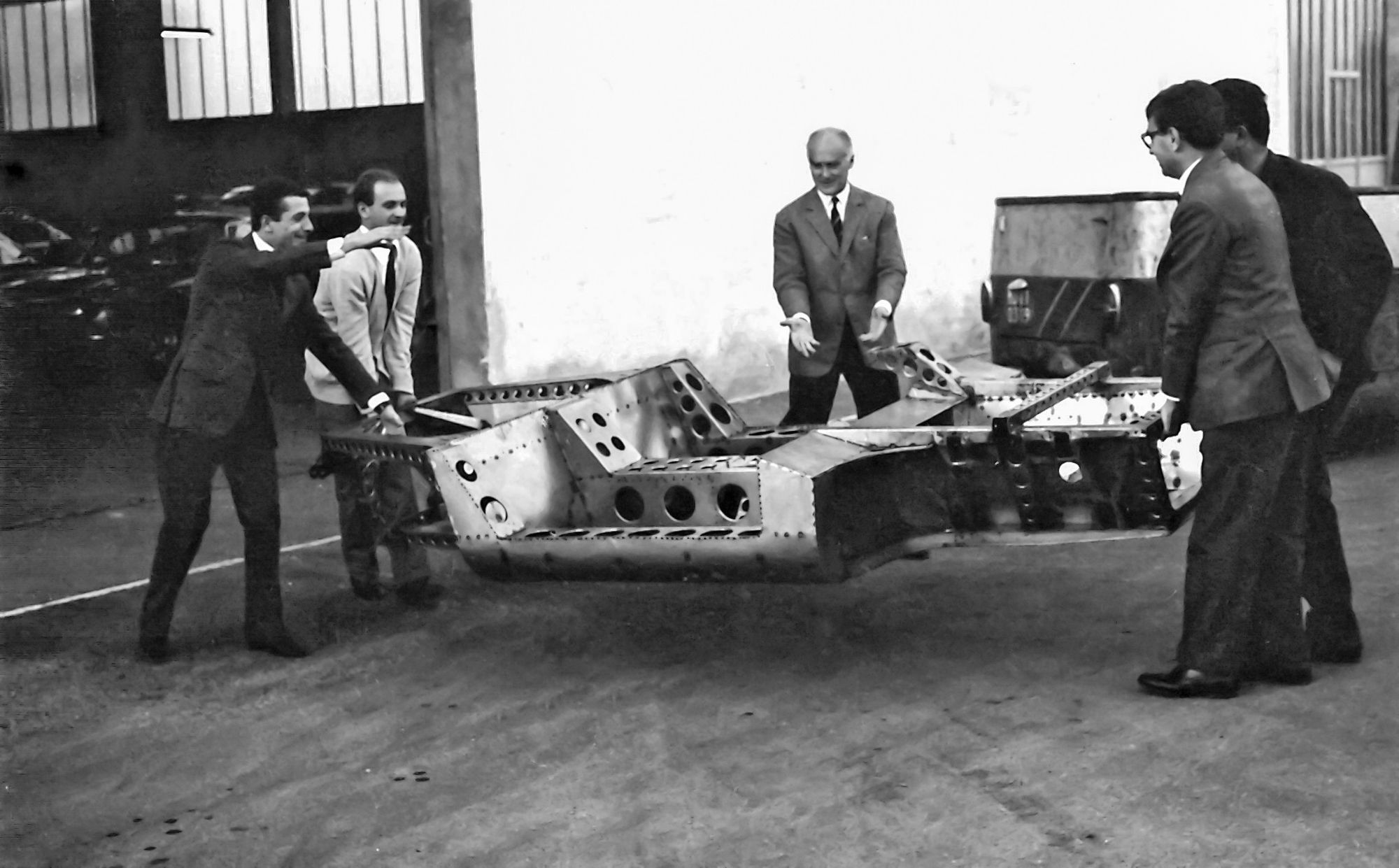
Without any doubt, the young fledgling sportscars maker had had the European press intrigued and excited by their latest concept, for which work had started earlier that year. It was soon after the end of summer of 1964 when series production of the Lamborghini 350 GT had begun that chief engineer Giampaolo Dallara, along with Paolo Stanzani and Bob Wallace, all of whom had more time in hand, began toying with the idea of a mid-engine sports-racing car for Lamborghini.

Initially, the dream was for a small 1.1 to 1.3-liter midship three-seater, with the driver seating at the middle, and Oliviero Pedrazzi immediately came up with some technical drawings conceptualizing the layout. Soon thereafter, the ambitions were scaled up, no doubt inspired by the recently unveiled Ford GT40 endurance racing machines, as well as all the mid-engine racers from the likes of Ferrari (the 246SP and the 250P) and Maserati (the Tipo 63).

The idea of putting the engine amidship, ahead of the rear axle line, was not all that new; the first time an engine was located immediately ahead of the rear axle in a car was in Austrian genius Edmund Rumpler’s Tropfenwagen. Unveiled at the Berlin Motor Show of 1921, the Tropfenwagen (teardrop car in German), was a revolutionary concept featuring an amazingly aerodynamic body, with a coefficient of drag of just 0.28, when most contemporaries were over 0.60.
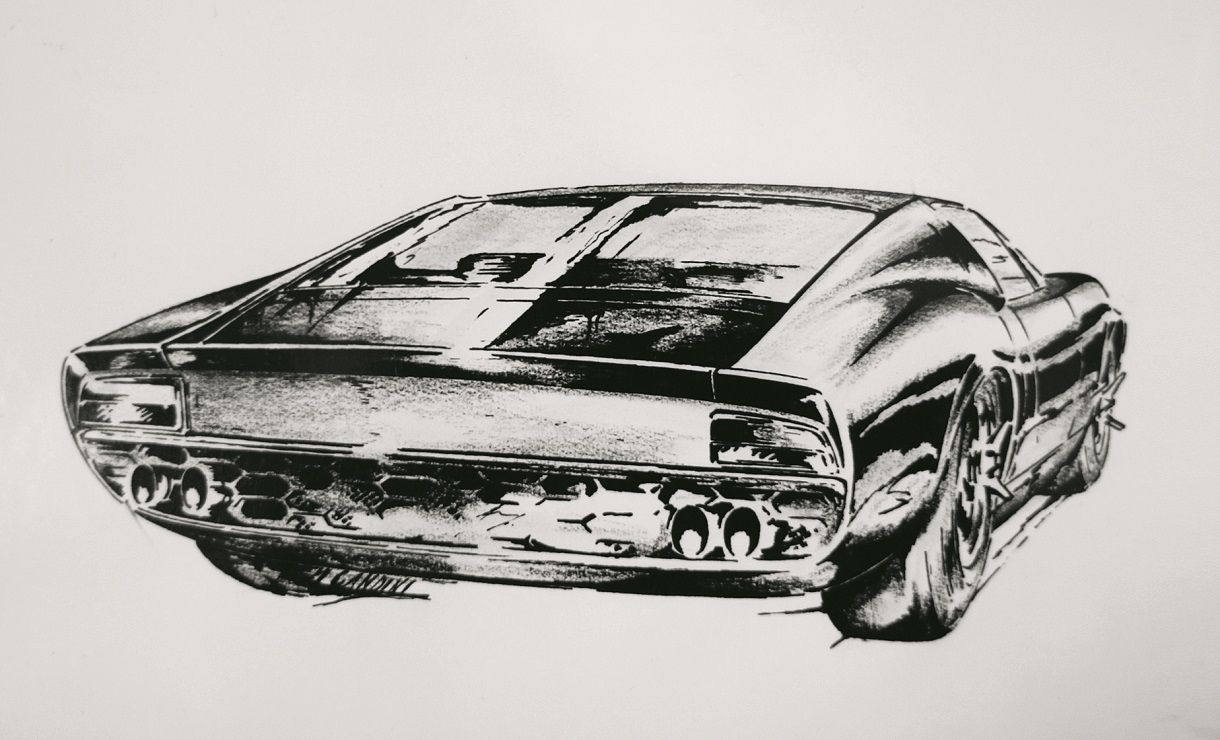
Several racing cars such as the Benz Tropfenwagen from 1923 and Auto Union’s famous Silver Arrow from a decade later, tried out mid-engine racers. In the 1950s Englishmen John Cooper and Eric Brandon once again revived the idea with the Cooper single-seater racers. And then René Bonnet the René Bonnet Missile and Le Mans, and then the Djet, with which he entered in the 1962 24 Hours of Le Mans, and which finished a creditable 17th. The road version followed soon after.
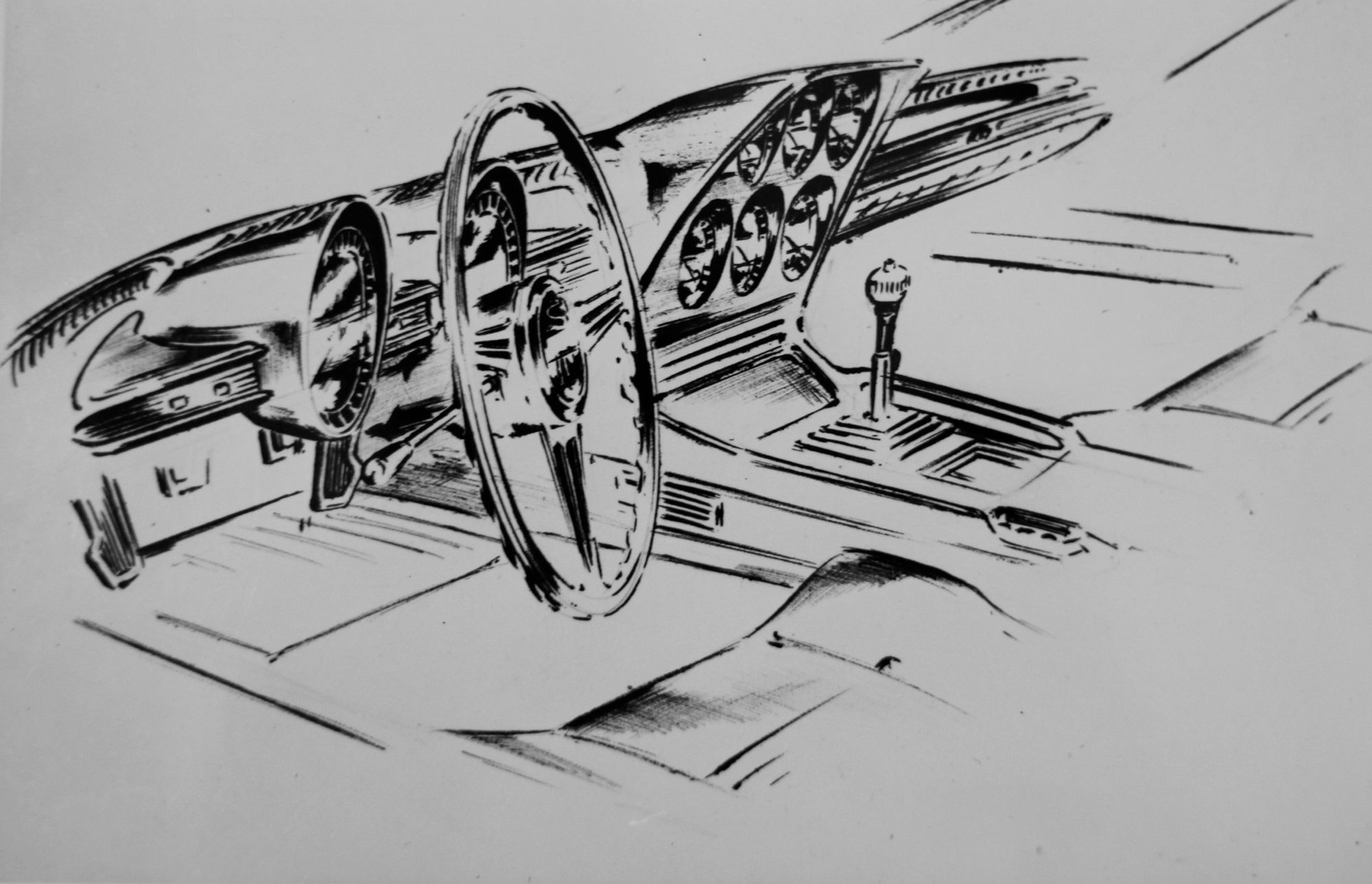
Thus, when Dallara & Co. was dreaming of a midship Lamborghini, the idea had already been around for a few years. The issue though was that of fitting the big and mighty Lamborghini V12. The engineering concept of the Mini came to the rescue, reminding the trio that it would be possible to incorporate the engine and gearbox in the same block, using the same oil.

Until late 1964, Dallara and his colleagues doodled on sheets of paper, making rough sketches of the chassis layout, using the Bizzarrini-designed engine as the central point to the concept. It was at around this stage of the development that Dallara and Stanzani approached Ferruccio Lamborghini, explaining what they were up to, and surprisingly, Ferruccio gave them the green light, assigning the responsibility of the project to Dallara, with the caveat that they would not go racing.
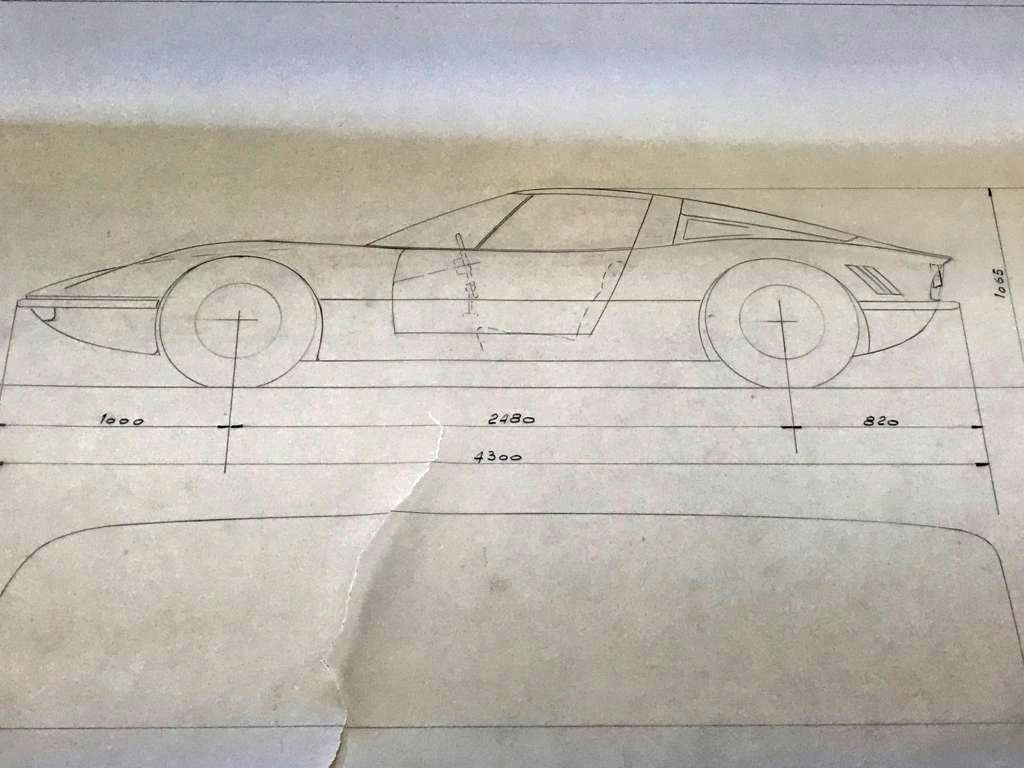

It was only in January 1965 that Dallara and Co. began work on the mid-engined car project in all seriousness. It took close to six months for Dallara, with the help of Achille Bevini (for the chassis), Oliviero Pedrazzi (for designing the engine-gearbox layout), Roberto Frignani (for engine testing) and Paolo Stanzani (computing stress analysis) to complete the detailed engineering drawings of the very innovative chassis. “The drawings of the chassis and powertrain were completed by June 1965,” explained Dallara to this writer, “and the start of the making of the chassis by Marchesi” was by August 1965.
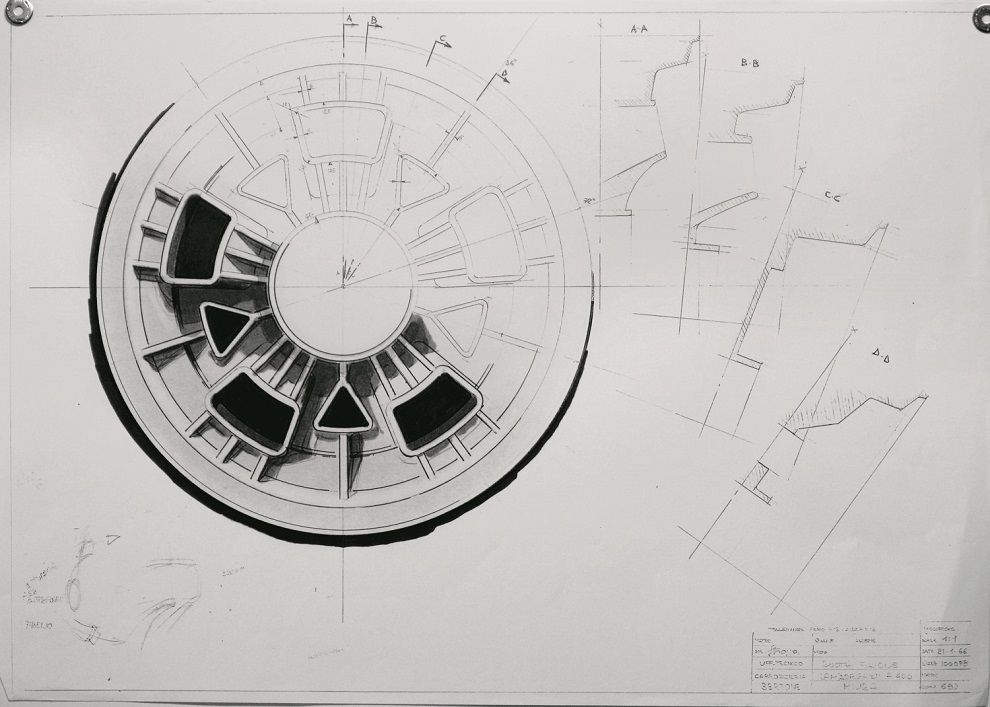
Founded by skilled artisans Umberto Marchesi and Mauro Bonora in Modena, one of the very first jobs given to Marchesi & C. was the construction of the prototype chassis of the Lamborghini TP400. The chassis featured a monocoque central section made very rigid with boxed side members, central tunnel, and bulkhead, the whole liberally lightened with pressed chamfered large diameter holes.

Most importantly, by placing the engine transversely with the gearbox and transaxle mounted at the ‘rear’ of the engine, in unit with the crankcase, the wheelbase of the chassis worked out to a tidy 2.46 meters, with the entire chassis weighing in at a very lightweight 75kgs!
Of course, all this was happening in great secrecy. The first time anyone outside Automobili Ferruccio Lamborghini ever had any indication of this new project was when Paolo Stanzani approached the coachbuilder of the 350 GT, Carrozzeria Touring to propose a design to clothe the chassis for project Tigre (as it was called then) on 14th September 1965.

Touring showed a colour rendering to Ferruccio Lamborghini and his engineers on 26thOctober 1965. A couple of weeks later, Touring presented two 1:10 scale models, with asymmetric sides (for a total of four ‘proposals’), none of which impressed Lamborghini or his team, remembered Paolo Stanzani, when he wrote to the author in 2012.

When the chassis was put on display at the Turin Motor Show on the 3rd of November 1965, almost every coachbuilder was very keen to clothe such an exciting mechanical combo, and all had stopped by at Lamborghini’s to propose their services. Except for one, Carrozzeria Bertone. It was only late in the evening that Nuccio Bertone, along with his head of communication then, Enzo Prearo, sauntered by.
The story goes something like this: apparently Lamborghini asked Bertone as to what took him so long to get to the Lamborghini stand. To which Bertone replied that he wanted to wait until the crowds had cleared before coming across. And then expressing his admiration for the compact chassis, Nuccio added: “I will pen the perfect shoe to fit such a wonderful foot.”

Lamborghini immediately agreed to Bertone as the selected coachbuilder, but the prototype needed to be ready for a Geneva Motor Show unveiling the following March 1966. A seemingly impossible task, but then they had not counted on the ability of another young rising star.
For the next part of the story, tune in tomorrow.
For more detailed information on the genesis of the Lamborghini Miura P400, check out Lamborghini: At the Cutting Edge of Design at: Lamborghini: At the Cutting Edge of Design by Gautam Sen with Branko Radovinovic and Kaare Byberg (daltonwatson.com)
Comments
Sign in or become a deRivaz & Ives member to join the conversation.
Just enter your email below to get a log in link.
